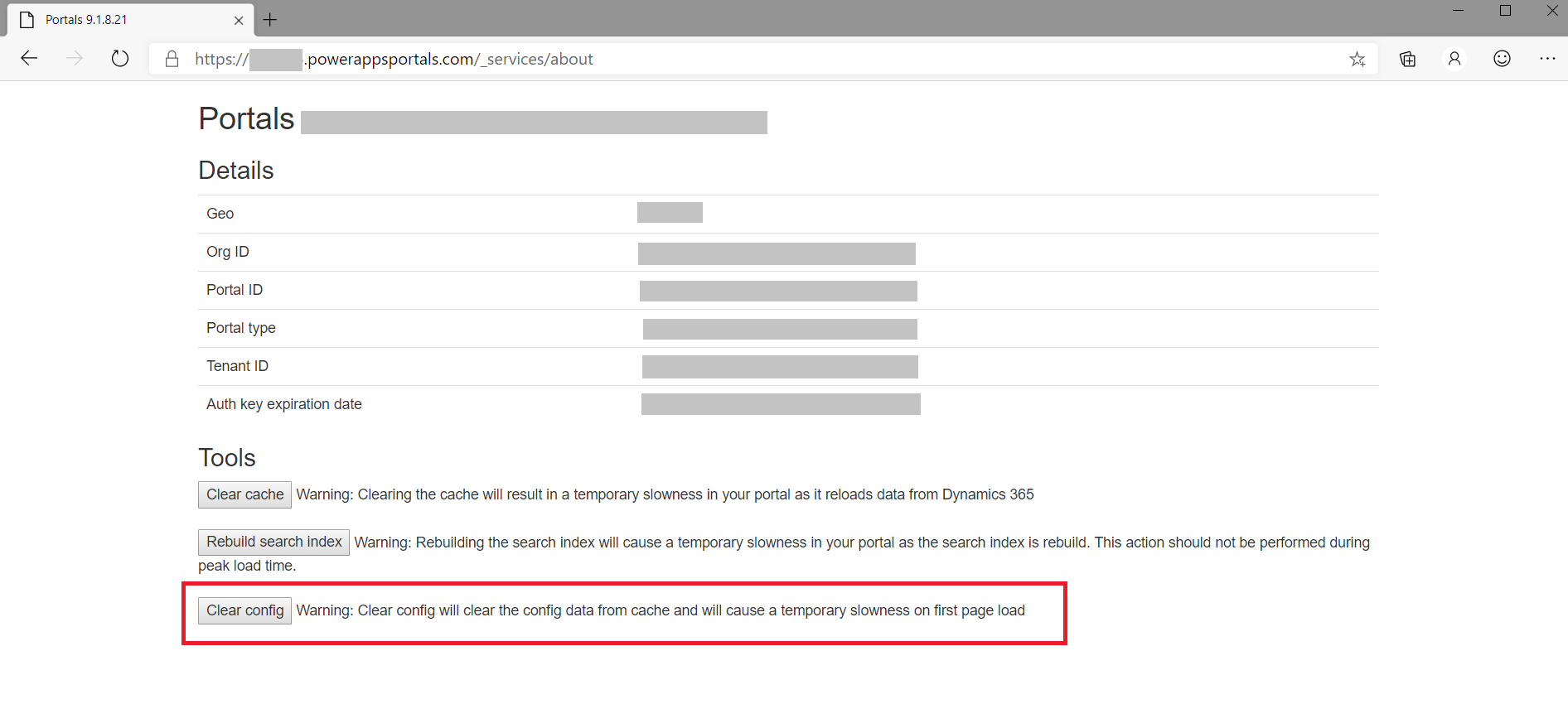Publishing changes to PowerApps Portals
PowerApps Portals uses the selective entity caching approach to improve reliability and performance of your portal. In this blog post, learn how it works with the portal designer .
Publishing the changes
If you are changing the entities which are identified as the configuration entities using the Unified Interface application, it required to explicitly “Clear Config” cache so these changes start showing up in Portal.
Portal administrator should be able to see this option in “<portal_path>/_services/about” page along with other clear server-side cache options.

Configuration entities
Portal metadata are stored as data in the following entities. Hence, the below entities are classified as configuration entities.
| adx_contentaccesslevel | adx_redirect | adx_webpage_tag |
| adx_contentsnippet | adx_setting | adx_webpageaccesscontrolrule |
| adx_entityform | adx_shortcut | adx_webpageaccesscontrolrule_webrole |
| adx_entityformmetadata | adx_sitemarker | adx_webpagehistory |
| adx_entitylist | adx_sitesetting | adx_webpagelog |
| adx_entitypermission | adx_urlhistory | adx_webrole_systemuser |
| adx_entitypermission_webrole | adx_webfile | adx_website |
| adx_externalidentity | adx_webfilelog | adx_website_list |
| adx_pagealert | adx_webform | adx_website_sponsor |
| adx_pagenotification | adx_webformmetadata | adx_websiteaccess |
| adx_pagetag | adx_webformsession | adx_websiteaccess_webrole |
| adx_pagetag_webpage | adx_webformstep | adx_websitebinding |
| adx_pagetemplate | adx_weblink | adx_websitelanguage |
| adx_portallanguage | adx_weblinkset | adx_webtemplate |
| adx_publishingstate | adx_webnotificationentity | |
| adx_publishingstatetransitionrule | adx_webnotificationurl | |
| adx_publishingstatetransitionrule_webrole | adx_webpage |
Note: The SLA for cache refresh (non-configuration entities data transfer between Dynamics 365 and portal) is 15 minutes.



